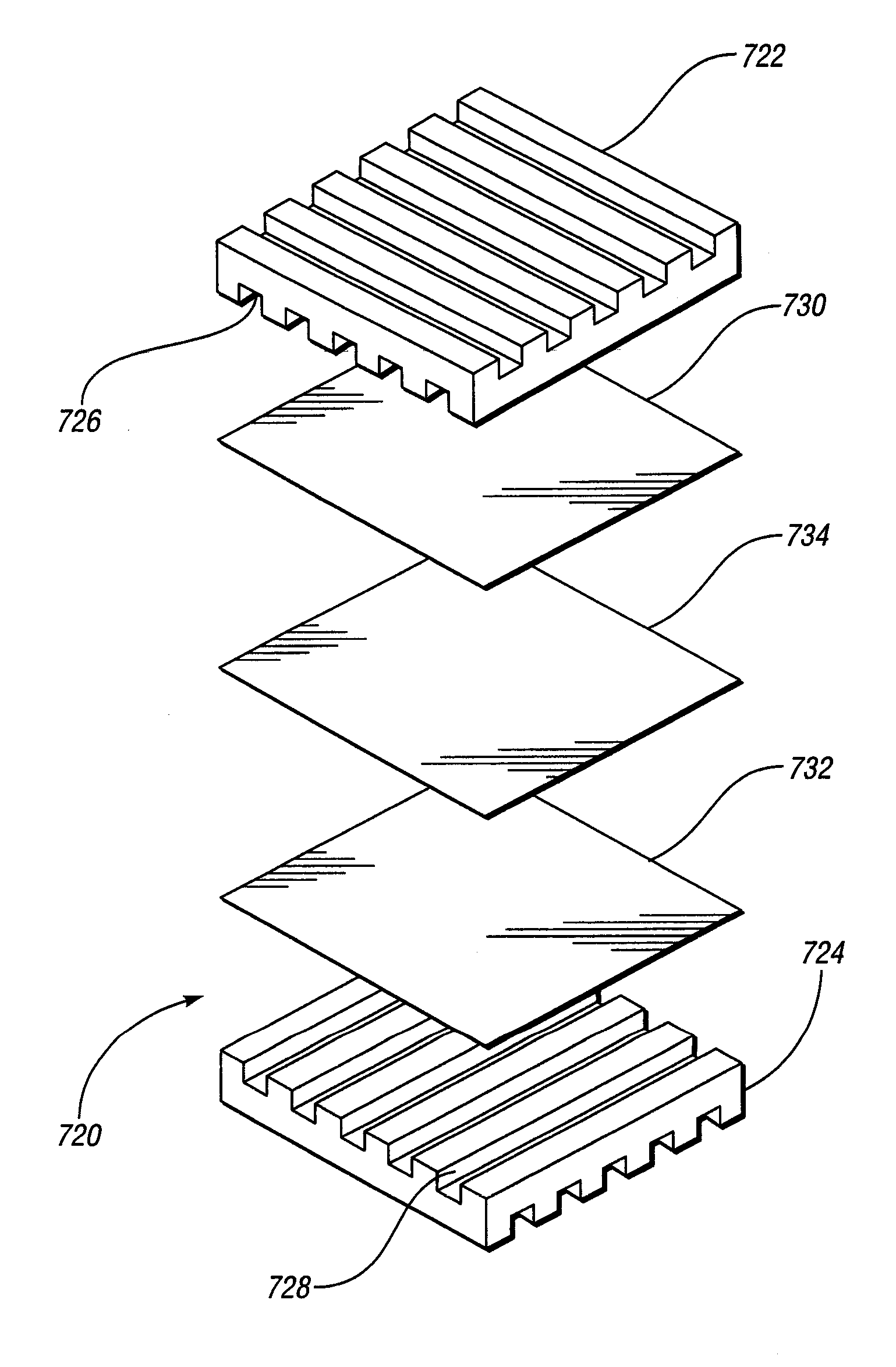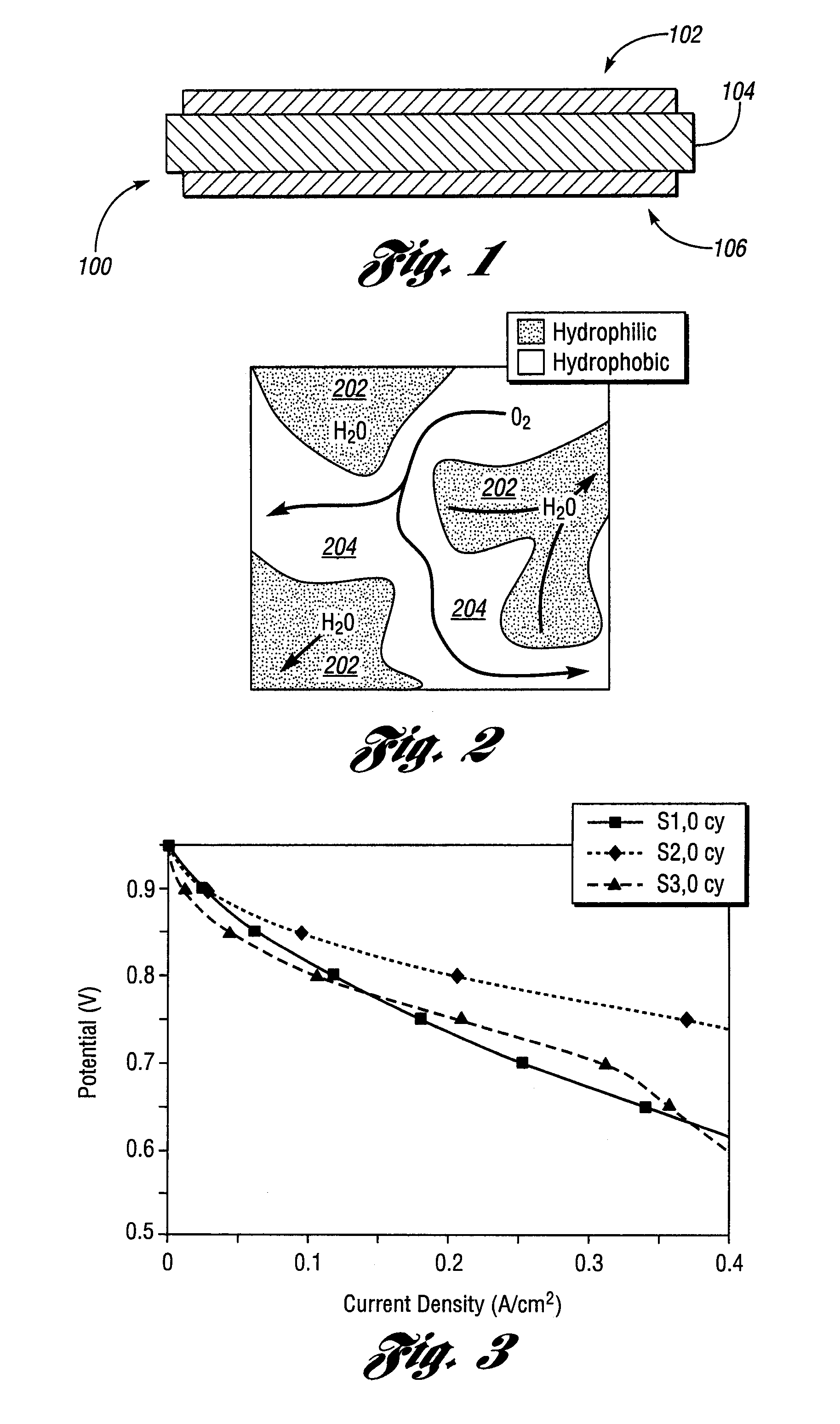Hybrid Catalyst System and Electrode Assembly Employing the Same
a hybrid catalyst and electrode technology, applied in the direction of physical/chemical process catalysts, metal/metal-oxide/metal-hydroxide catalysts, cell components, etc., can solve the problems of reduced oxygen diffusion at the surface of the catalyst coated membrane, reduced catalyst start-up time, and excess water contributing to carbon corrosion in the catalyst, etc., to reduce eca loss, reduce pt loading, and reduce eca loss
- Summary
- Abstract
- Description
- Claims
- Application Information
AI Technical Summary
Benefits of technology
Problems solved by technology
Method used
Image
Examples
example
[0056]As used in the examples, three CCM samples are provided with the same anode composition, which includes Pt on high surface area (SA) carbon. The anode is prepared by suspending Pt / C (Cabot Corp, Dynalyst 50K R1 50% Pt on High SA Ketjenblack) in dionized water and combining with Nafion and Teflon solutions.
[0057]The CCM samples vary in their respective cathode compositions. Cathode of sample S1 includes Pt on high SA carbon; cathode of sample S2 includes a hybrid mix of Pt on high SA carbon and PtNiCo on low SA carbon; and cathode of sample S3 includes a low-loading hybrid mix of Pt on high SA carbon and PtNiCo low SA carbon. The cathodes are prepared as follows. For Pt on high SA carbon as used in sample S1, catalyst ink is prepared by suspending Pt / C (Cabot Corp, Dynalyst 50K R1 50% Pt on High SA Ketjenblack) in dionized water and combining with Nafion and Teflon solutions. For the hybrid mix of Pt on high and low SA carbon as used in sample S2, catalyst ink is prepared by su...
PUM
| Property | Measurement | Unit |
|---|---|---|
| surface area | aaaaa | aaaaa |
| surface area | aaaaa | aaaaa |
| surface area | aaaaa | aaaaa |
Abstract
Description
Claims
Application Information
 Login to View More
Login to View More - R&D
- Intellectual Property
- Life Sciences
- Materials
- Tech Scout
- Unparalleled Data Quality
- Higher Quality Content
- 60% Fewer Hallucinations
Browse by: Latest US Patents, China's latest patents, Technical Efficacy Thesaurus, Application Domain, Technology Topic, Popular Technical Reports.
© 2025 PatSnap. All rights reserved.Legal|Privacy policy|Modern Slavery Act Transparency Statement|Sitemap|About US| Contact US: help@patsnap.com



